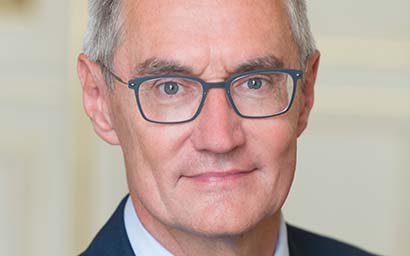Didier Saint Georges, member of the strategic investment committee and managing director at Carmignac, analyses the current state of play of global bond and equity markets and how investors should interpret recent jolty movements.
Bond and equity markets sometimes seem to send out strangely equivocal messages that can be hard to figure out. Just after the fourth quarter of last year, the message was coherent: the discovery of what promised to be effective vaccines, along with fiscal stimulus programmes – above all in the United States – looked set to put global economic growth splendidly back on track. That expectation was reflected by a combination of rising interest rates and a stock-market rally fuelled by the superior performance of cyclical sectors.
Then things got more complicated in the second quarter of this year, initially in the US and a month later in Europe, as economists began wondering whether the recovery might not peter out soon. Interest rates then started trending downwards again, whereas equity markets kept powering ahead, due to the paradox that has so strongly sustained them since 2009 – i.e. bad macroeconomic news guarantees that central banks will prolong their supportive policies.
In August, the message we’ve been getting from markets tells yet another story. Though most interest rates appear to be continuing on their downward trajectory after briefly perking up at the start of the month, equity markets seem a lot more halting this time round. The fact is that the current state of play calls for a fresh interpretation of market movements.
To begin with, investors’ bearish outlook on fixed income has been corroborated by a variety of economic data released in the United States over the past few weeks. The country’s consumers are expressing a disappointingly lower intention to spend despite the mountains of savings they’ve piled up.
A plausible interpretation is that households have seen prices for consumer goods increase substantially – reflecting supply-chain disruptions – just when the government started scaling back the relief payments introduced in the worst days of the pandemic-induced slump.
Moreover, the rapid spread of a new, more virulent variant of the virus has upended the initial timeline for a return to normal in the service sector – a development that is highly unlikely to buoy consumer sentiment. That explains why pundits and economists have almost unanimously downgraded the economic growth outlook for the coming months.
But at the same time, the US jobs market has seen further improvement. For a large number of vacant positions, labour demand is even clearly outpacing labour supply. The uptick in consumer prices driven by a temporary increase in materials costs could thus give way to more durable inflation caused by rising wages, though for the time being consumers seem rather unconvinced.
This means that for Federal Reserve chairman Jerome Powell, “D-day” may soon be approaching. At that point, the key indicators that the Fed tracks – the basis for determining how high benchmark interest rates should be – will suggest it is time to start bringing monetary policy back to normal. To achieve that, the central bank will first have to wind down its monthly purchases of US Treasuries before it can hike interest rates. But it now looks like that process may kick off before the year is out.
And when it does, equity markets will be in for a jolt. Because however gradual monetary-policy tightening may be, investors will have to factor in this new variable, hardly supportive by itself– just as they start to suspect that the economic growth projections they had in mind were overblown. If that were to happen, a lot of those investors would probably conclude that the Fed simply made a “policy mistake”. But perhaps a fairer judgement would be that the primary risk for markets today is indeed slowing growth accompanied by inflationary pressure – call it “stagflation 2.0”. And that there’s no ideal monetary policy for dealing with it.
It’s worth noting that China, a country much further along in the economic cycle than the United States, not to mention Europe, has already, in its own way, been through just such a delicate stage for equities. Chinese stock-market performance has thus taken a hit that was made that much worse by dramatically tighter regulatory scrutiny. Therefore, at this stage it would not be illogical to see a reversal in the performance of Chinese equities relative to their western counterparts. That goes particularly for the country’s often high-quality growth names.
© 2021 funds europe





